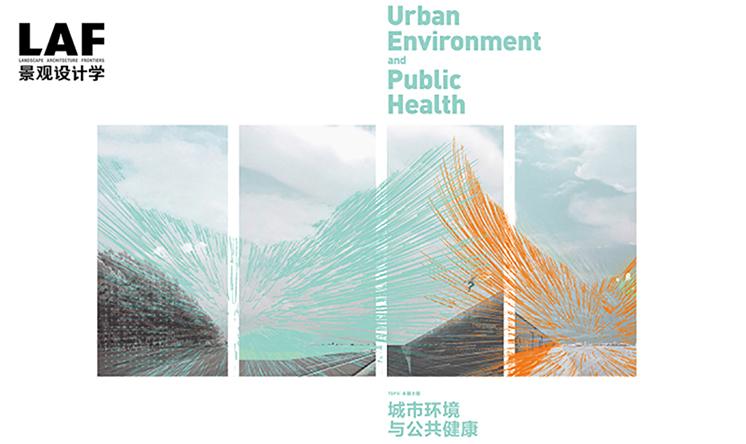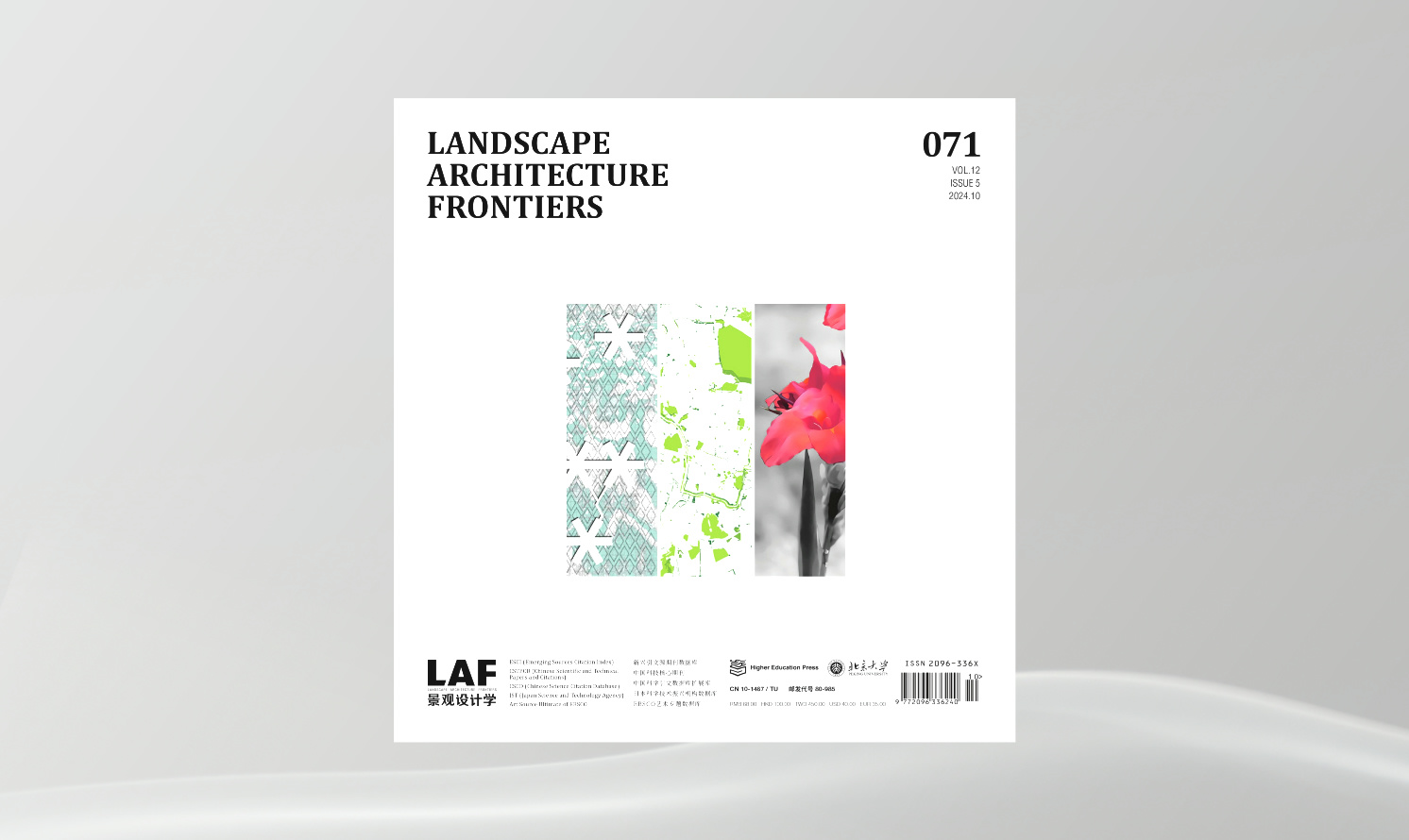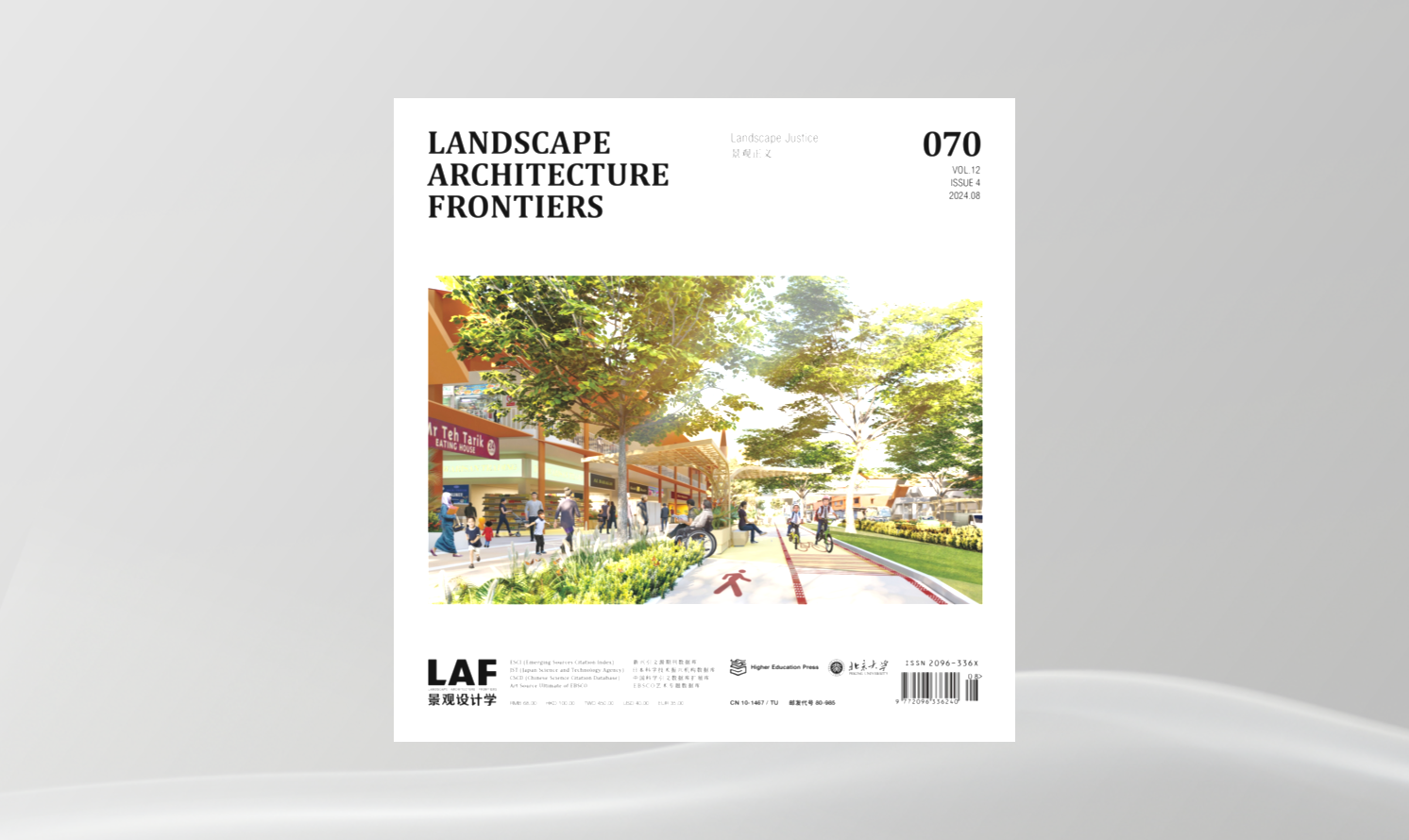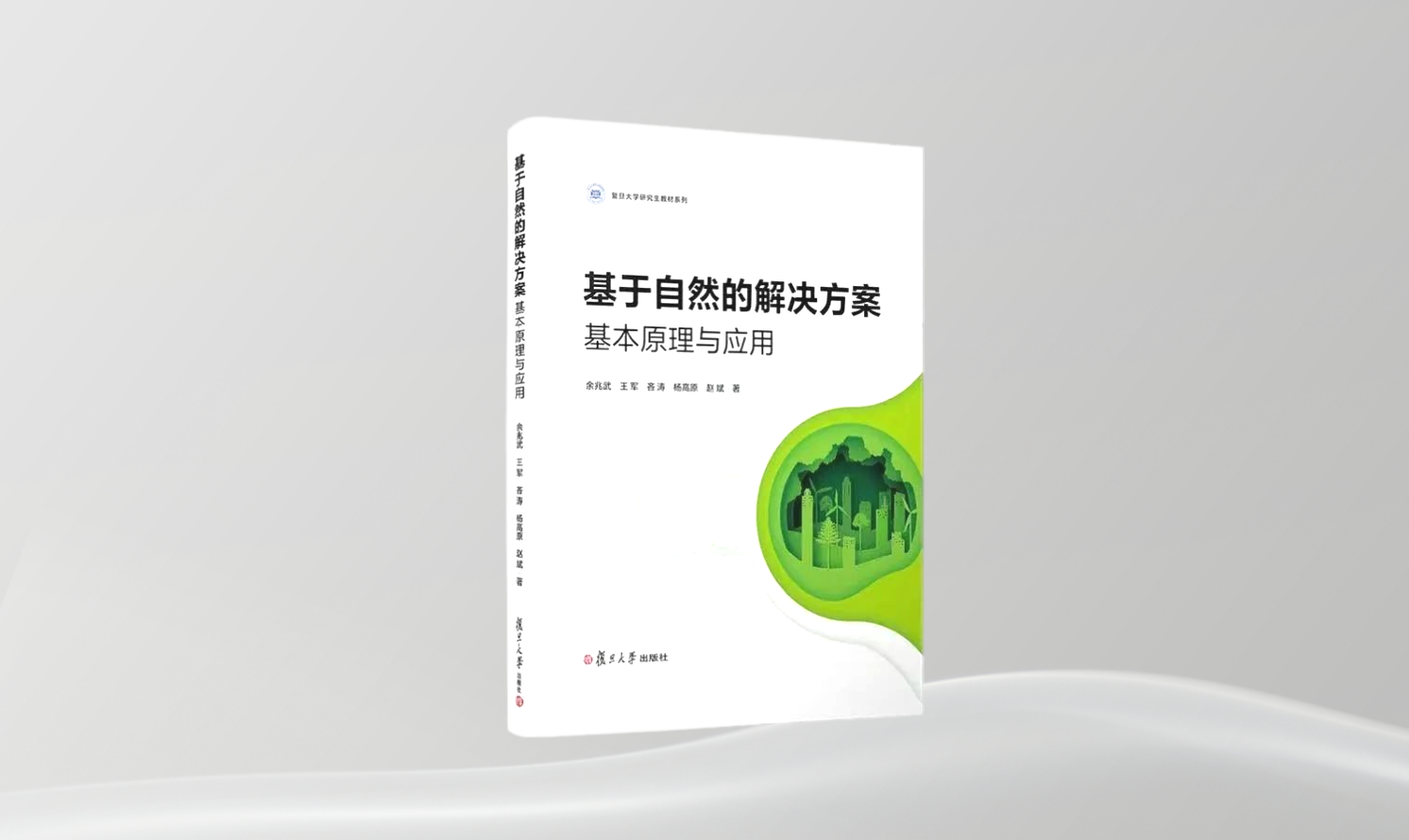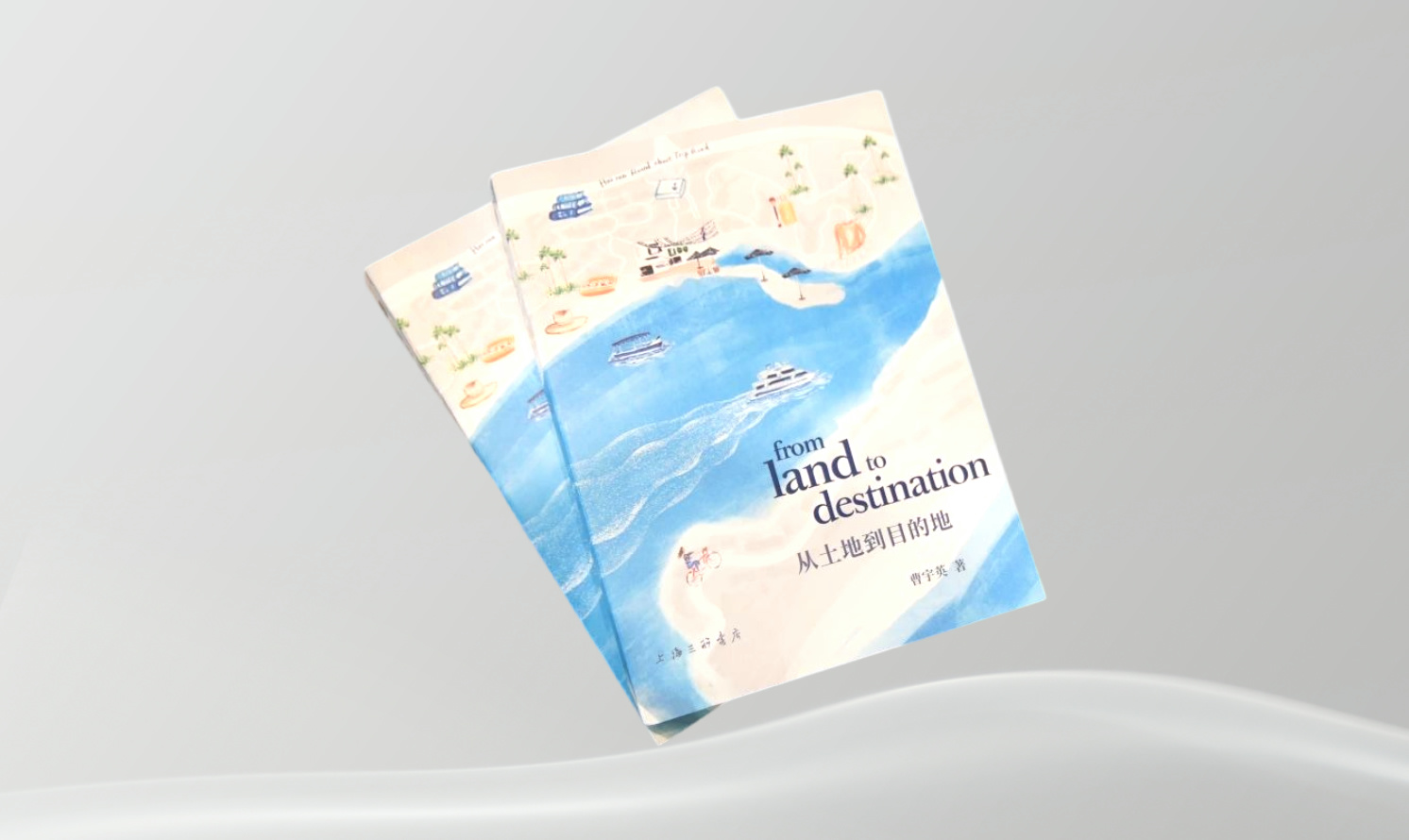綠色等于健康�����?建立高密度健康城市研究的實(shí)證基礎(chǔ)
Green Equals Healthy? Towards an Evidence Base for High Density Healthy City Research
作者:克里斯·韋伯斯特�,錢莫伊·沙卡��,斯考特·杰寧斯·墨爾本�����,鄧信惠�����,彭文輝����,內(nèi)扎爾·卡法菲 Chris WEBSTER, Chinmoy SARKAR, Scott Jennings MELBOURNE, Dorothy TANG, Mathew PRYOR, Nezar KAFAFY
摘要
雖然城市綠化能夠有助于身心健康這一觀點(diǎn)已在景觀和城市規(guī)劃中得到了廣泛認(rèn)可,但是其仍缺乏具體的研究成果來(lái)支持���。本文探討“綠色植被”和健康之間的關(guān)聯(lián)如何在景觀和城市設(shè)計(jì)的歷史進(jìn)程中得到發(fā)展��,并提出以明確實(shí)證為支持在城市中創(chuàng)建更多更高品質(zhì)的綠色植被基礎(chǔ)的迫切需要��。我們就增加城市綠色植被和改善公共健康之間的諸多假設(shè)性的因果關(guān)聯(lián)進(jìn)行了討論���,并根據(jù)廣泛的文獻(xiàn)綜述,對(duì)那些發(fā)現(xiàn)了這二者之間關(guān)聯(lián)方面的近期研究予以了著重闡述���。除此之外��,本文還對(duì)未來(lái)的研究方向提出了建議�。
關(guān)鍵詞
城市綠地��;綠色植被�;公共健康;步行�;景觀;城市規(guī)劃
Abstract
The doctrine that urban greenery is positively associated with physical and mental health is widely acknowledged in landscape and urban planning, but is not underpinned by specific research findings. This paper examines how the association between “greenery” and health has developed through the history of landscape and urban design, and sets out the need for clear evidence based research as the foundation of credible arguments for the provision of more and better quality greenery in the city. We discuss the many hypothetical causal pathways between increased urban greenery and improving public health, and from a broad literature review we highlight recent research studies that have found associations between them. Directions for future research are suggested.
Key words
Urban Green Space; Greenery; Public Health; Walking; Landscape; Urban Planning
健康城市:論城市綠色景觀對(duì)大眾健康的影響機(jī)制及重要研究問題
Healthy Cities: Mechanisms and Research Questions Regarding the Impacts of Urban Green Landscapes on Public Health and Well-being
作者:姜斌��,張?zhí)瘢?/span>·C·蘇利文Bin JIANG, Tian ZHANG, William C. SULLIVAN
摘要
本文針對(duì)目前中國(guó)突出的城市環(huán)境問題及其所導(dǎo)致的大眾健康問題���,從促進(jìn)身體鍛煉��、舒緩精神壓力�����、減輕精神疲勞��、提供生態(tài)產(chǎn)品與服務(wù)�、提升社會(huì)資本5個(gè)理論機(jī)制來(lái)解釋城市綠色景觀對(duì)公眾健康及福祉的影響�,并據(jù)此提出了一個(gè)簡(jiǎn)明的理論框架和一系列有待研究的重要問題。
關(guān)鍵詞
公眾健康��;城市綠色景觀���;影響機(jī)制�;理論框架�;研究問題
Abstract
The paper presents a summary of critical environmental problems in Chinese cities and serious public health crisis resulting from those environmental problems. The paper explains five theoretical pathways through which urban natural landscape influences human health and wellbeing: promoting physical exercises, relieving stress, reducing mental fatigue, providing ecological products or services, and enhancing social capital. A theoretical framework connecting urban natural landscape with health outcomes is established and a set of important research questions are presented.
Key words
Public Health; Urban Green Landscape; Mechanism; Theoretical Framework, Research Questions
重要卻被低估的景觀功能—提升專注力
A Significant but Under-Appreciated Benefit of Landscape Architecture: Supporting People’s Capacity to Pay Attention
作者:威廉·C·蘇利文 William C. SULLIVAN
摘要
專注力—即將注意力集中在某一想法或任務(wù)上�,同時(shí)屏蔽大腦中諸多刺激與思緒—是所有人類成就的基礎(chǔ)。但是這項(xiàng)能力卻是一種有限的資源�����,我們會(huì)在專注過程中變得疲勞而無(wú)法集中注意力?����?茖W(xué)家們最近發(fā)現(xiàn):接觸綠色空間���,即便是高密度城市中的綠色空間�,也是恢復(fù)專注力的一種有效方法����。因此,公園��、相互連通的綠色廊道�����、行道樹���、雨水花園�、綠色屋頂���、綠色景觀墻等綠色空間的功能不止局限于提供生態(tài)系統(tǒng)服務(wù)��,它們還能幫助人們集中注意力�����,并在保持專注的過程中實(shí)現(xiàn)人生活中的目標(biāo)���。這項(xiàng)研究成果意味著我們應(yīng)該加倍努力在每一扇門前營(yíng)造出綠色自然環(huán)境�����。
關(guān)鍵詞
專注力��;修復(fù)��;精神疲勞���;景觀設(shè)計(jì);綠色基礎(chǔ)設(shè)施
Abstract
Our capacity to pay attention — to direct our focus toward one idea or task while excluding from our minds a host of competing stimuli and thoughts — is key to every human achievement. But our ability to pay attention is a limited resource, it fatigues with use. Scientists have recently discovered that having contact with green spaces, even in otherwise dense urban settings, is an effective way to restore our ability to focus. Thus, green spaces in the form of parks, interconnected green corridors, street trees, rain gardens, green roofs and green walls do more than provide ecosystem services. They help people concentrate their attention and in doing so, help us achieve our goals in life. One implication of these findings is that we should re-double our efforts to ensure that we provide nature at every doorstep.
Key words
Attention; Restoration; Mental Fatigue; Landscape Architecture; Green Infrastructure
健康的城市生態(tài)與健康的人
Connecting Healthy Urban Ecology with Human Health
作者:張俊彥��,唐宜君 Chun-Yen CHANG, I-Chun TANG
摘要
我們的城市建設(shè)已將人類隔離于生態(tài)世界之外��。然而�,近期實(shí)驗(yàn)證據(jù)表明,自然環(huán)境是影響人類健康��,尤其是城市居民健康的一個(gè)重要因素�。在本文中,我們提出了“健康的城市生態(tài)與健康的人”的概念框架�,倡導(dǎo)健康的城市生態(tài)可以支撐健康城市生活的觀點(diǎn),通過對(duì)生態(tài)及人類健康兩個(gè)方面的綜合考慮�,我們可以形成健康城市發(fā)展的可行途徑。我們建議以實(shí)證為基礎(chǔ)的療愈性景觀設(shè)計(jì)��。創(chuàng)造一個(gè)健康的城市需要考慮城市居民的身心健康���,同時(shí)也需要考慮生態(tài)建設(shè)�����,包括綜合考慮空間解決方案�、自然格局和生態(tài)流�,以及文化和環(huán)境的社會(huì)經(jīng)濟(jì)條件。也就是說��,建立一個(gè)健康的城市必須同時(shí)考慮人類健康與生態(tài)建設(shè)�,發(fā)展兩者兼?zhèn)涞某鞘协h(huán)境。雖然我們不能創(chuàng)造一個(gè)具有這兩方面所有品質(zhì)的城市綠地空間��,但至少應(yīng)采取行動(dòng),尋找機(jī)會(huì)���,在城市環(huán)境開發(fā)中至少滿足這些目標(biāo)的某些方面���。我們應(yīng)為了人與自然世界的和諧尋求機(jī)會(huì)以創(chuàng)造健康城市環(huán)境。借由所提出的框架��,我們建議城市規(guī)劃師和景觀設(shè)計(jì)師利用所介紹的理論和環(huán)境因子來(lái)創(chuàng)造出健康城市�。這一目標(biāo)的實(shí)現(xiàn)對(duì)個(gè)人和城市都將帶來(lái)有利影響。
關(guān)鍵詞
健康城市���;生態(tài)福祉�����;人類健康���;綠色空間
Abstract
Our cities have been created to isolate humans from the ecological world. However, recent empirical evidence shows that the natural environment is a crucial determinant of human health, especially for urban dwellers. In the current article, we propose a conceptual framework of “healthy urban ecology and healthy people” to advocate the idea that healthy urban ecology can support healthy urban living, and by considering both aspects, we might reach a feasible approach to developing healthy cities. We suggest an evidence-based therapeutic landscape design. Creating a healthy city requires spatial development that considers both the physiological and psychological health and wellbeing of urban dwellers. A healthy city also needs ecological construction that considers a spatial solution, natural patterns and ecological flows, and the culture and socioeconomics of the environment. Moreover, the creation of a healthy city must include the idea of ecological construction with human health to develop an urban environment that includes both features. Although we cannot create a green space that has all of these qualities in both features, actions should be taken to find opportunities to fulfill at least some aspects of these goals in the development of urban environments. We should make every attempt to create a healthy city for humans and the natural world. With the proposed framework, we suggest city planners and landscape architects to use the introduced theories and environmental factors to create healthy cities. Achieving this goal will benefit both individuals and cities.
Key words
Healthy City; Ecological Well-being; Human Health; Green Space
親自然的景觀設(shè)計(jì)對(duì)改善健康與福祉的作用
The Role of Biophilic Design in Landscape Architecture for Health and Well-being
作者:喬·克蘭西,雷康玲 Joe CLANCY, Catie RYAN
摘要
截至2007年�,全球50%以上的人口生活在城市。隨著城市居民越來(lái)越多����,全球城市化的水平不斷提高����,而城市中心的綠色空間與自然環(huán)境卻不斷減少�����。親自然設(shè)計(jì)的目的是在我們建造與設(shè)計(jì)的環(huán)境中恢復(fù)自然刺激�,以保護(hù)����、維持、恢復(fù)��、提高我們與自然世界在生理���、認(rèn)知和心理上的聯(lián)系����。作為助益健康的一種途徑���,親自然設(shè)計(jì)可以催化景觀設(shè)計(jì)在改善城市環(huán)境中的公眾健康方面發(fā)揮核心作用�。
關(guān)鍵詞
熱愛自然的天性�;景觀設(shè)計(jì)���;城市;健康����;復(fù)雜系統(tǒng)
Abstract
As of 2007, over 50% of the global population is now urban. With more global urbanites, has come increased urbanisation and displacement of green space and natural environments from our urban centres. Biophilic design aims to restore natural stimuli in our built and designed environments to protect, maintain, restore and enhance our physiological, cognitive and psychological connections with the natural world. As part of a wider salutogenic approach to health, biophilic design has the potential to catalyze landscape architecture into playing a central role in public health of urban environments.
Key words
Biophilia; Landscape
以兒科醫(yī)生的視角診斷城市環(huán)境:訪談理查德·J·杰克森
Examining the Urban Environment through the Eyes of a Pediatrician: an Interview with Richard J. Jackson
作者:姜斌 Bin JIANG
摘要
本次訪談從兒科學(xué)的視角, 就與城市景觀對(duì)人類健康的影響相關(guān)的幾個(gè)重要問題進(jìn)行了討論��。理查德·J·杰克遜介紹了其在該領(lǐng)域內(nèi)的職業(yè)生涯����,并對(duì)如何通過改善城市環(huán)境來(lái)促進(jìn)身體、精神和社會(huì)健康這一問題進(jìn)行了闡釋��。另一位對(duì)話者姜斌也在中國(guó)城市的社會(huì)和物質(zhì)環(huán)境語(yǔ)境下提出了與該主題相關(guān)的一些重要問題�。本次對(duì)話以一種全新的視角,將有助于城市管理者和設(shè)計(jì)專業(yè)人士通過重塑城市環(huán)境和改變市民的生活方式和社會(huì)規(guī)范���,解決迫在眉睫的人類健康問題�����。
關(guān)鍵詞
兒科學(xué)����;人類健康;城市環(huán)境��;中國(guó)城市���;后代
Abstract
This interview article focuses on discussion of several important issues related to the influence of urban landscape on human health from a perspective of pediatrics. Richard J. Jackson introduced his career in the field and explained how to promote physical, mental, and social health through improvement of urban environment. Bin Jiang, the interviewer, raised a few important questions related to the topic within the social and physical context of Chinese cities. Together, through a fresh perspective, this work would help city managers and design professionals to contribute to solving pressing human health problems by reshaping urban environment and changing citizens’ lifestyles and social norms.
Key words
Pediatrics; Human Health; Urban Environment; Chinese Cities; Future Generations
彈性樂清:氣候變化�、公共健康和景觀基礎(chǔ)設(shè)施
Resilient Yueqing: Climate Change, Public Health, and Landscape Infrastructure
作者:鄧信惠�,茱莉亞·凱恩·艾弗里卡 Dorothy S. TANG, Julia Kane AFRICA
摘要
氣候變化對(duì)公共健康的負(fù)面影響激發(fā)了因地制宜的�����、強(qiáng)調(diào)方案彈性的設(shè)計(jì)實(shí)踐�����。成功的景觀設(shè)計(jì)從公共健康專家�����、工程師和生態(tài)學(xué)家那里吸收真知灼見����,從而能對(duì)建成環(huán)境、公共健康和氣候變化間的復(fù)雜關(guān)系進(jìn)行整合式的探討。位于浙江省沿海地區(qū)樂清市的景觀設(shè)計(jì)研討課程為我們提供了一個(gè)討論城市景觀如何可持續(xù)地支持人類健康和福祉的機(jī)會(huì)���。小尺度的干預(yù)被用于檢驗(yàn)一種策略途徑的可行性�,從而在全球和系統(tǒng)性的尺度下解決問題�����。
關(guān)鍵詞
氣候變化�����;健康�;適應(yīng)性;景觀基礎(chǔ)設(shè)施�;浙江;彈性
Abstract
The impact of climate change on public health spurs geographically specific and resilient design interventions. Successful landscape architecture, harnesses insights from public health professionals, engineers, and ecologists to synergistically address the complex relationships between the built environment, public health, and climate change. A landscape architecture workshop in Yueqing City, a coastal community in Zhejiang Province, provides an opportunity to explore how urban landscapes might sustainably support human health and well-being. Small-scale interventions are used to test the viability of a tactical approach to design that addresses problems at a global and systemic scale.
Key words
Climate Change; Health; Adaptation; Landscape Infrastructure; Zhejiang; Resilience
澳大利亞博士山花園多功能區(qū)
Box Hill Gardens Multi Purpose Area, Australia
作者 澳派景觀設(shè)計(jì)工作室 / ASPECT Studios
摘要
澳派接受懷特霍斯市政府委托���,為博士山花園打造了一個(gè)可容納各種娛樂項(xiàng)目和活動(dòng)的公共空間�����。該場(chǎng)地最終的設(shè)計(jì)方案通過場(chǎng)地歷史和記憶的彰顯���,以及景觀和建筑形式的細(xì)致整合���,成功地體現(xiàn)了一種大膽的當(dāng)代審美。設(shè)計(jì)師為這個(gè)不斷擴(kuò)大的社區(qū)創(chuàng)造了一個(gè)珍貴而獨(dú)特的公共空間�����,為場(chǎng)地本身的歷史抹上了濃墨重彩的一筆��。
關(guān)鍵詞
城市公共空間�;公園;健康����;歷史����;社區(qū)
Abstract
ASPECT Studios was commissioned by the City of Whitehorse to create an innovative space with a diverse array of recreation activities and events within the Box Hill Gardens. The final design of the space successfully embodies a bold contemporary aesthetic with layers of history and memory, and the careful integration of landscape and built form elements. This growing community has been delivered a valued and unique public space that adds to the local history of the site.
Key words
Urban Public Space; Park; Health; History; Community
哈普雷的未來(lái):健康、水�、植被和農(nóng)業(yè)
Future Hopley: Hutano, Mvura, Miti
作者:萊昂納多·羅伯勒托·克斯坦特 Leonardo ROBLETO COSTANTE
摘要
通過簡(jiǎn)單的區(qū)域及場(chǎng)所營(yíng)造手法,該項(xiàng)目為哈普雷農(nóng)場(chǎng)的發(fā)展設(shè)立了一個(gè)景觀框架���。哈普雷農(nóng)場(chǎng)是在津巴布韋哈拉雷市的一個(gè)非正規(guī)聚居區(qū)��。該項(xiàng)目為非正規(guī)的居民創(chuàng)建了他們往往無(wú)法自己建立的社交中心���,而這些社交中心亦將成為對(duì)未來(lái)自建城市形成補(bǔ)充的核心基礎(chǔ)設(shè)施��。項(xiàng)目將區(qū)域擴(kuò)張格局���、雨水管理以及農(nóng)林業(yè)系統(tǒng)連接在了一起,解決了困擾哈拉雷目前與未來(lái)發(fā)展的問題��,創(chuàng)建了一個(gè)健康的社區(qū)�。
關(guān)鍵詞
非正規(guī);健康���;濕地��;社交����;教育
Abstract
Through territorial and simple place-making moves, the project establishes a landscape framework for the growth of Hopley Farms, an informal settlement in Harare, Zimbabwe. The provision of social hubs that informal dwellers usually do not build on their own become the centerpiece infrastructures that complement the future self-built city. A territorial growth pattern, rainwater management and an agroforestry system are linked to create a healthy community by tackling issues that plague Harare and its future growth.
Key words
Informal; Health; Wetland; Social; Education
風(fēng)之域——一個(gè)集降溫����、生產(chǎn)及娛樂于一體的新型城市公園
Aeolian Fields — A New Urban Park to Cool, Produce and Play
作者:OFICINAA設(shè)計(jì)事務(wù)所,TRANSSOLAR設(shè)計(jì)事務(wù)所 OFICINAA, TRANSSOLAR
摘要
“風(fēng)之域”(一個(gè)可用于降溫����、生產(chǎn)及娛樂的新型城市公園)�����,是OFICINAA和TRANSSOLAR設(shè)計(jì)事務(wù)所為位于曼海姆的原美國(guó)軍事基地所做的競(jìng)賽入圍方案�,其采用空氣的流動(dòng)作為設(shè)計(jì)前提��。設(shè)計(jì)方案提出用一系列大型景觀形態(tài)來(lái)塑造風(fēng)的流動(dòng)極其在該場(chǎng)地中的特性�。該方案描繪了一個(gè)新型公園,其運(yùn)用空氣來(lái)雕琢空間環(huán)境�����,以提升社區(qū)的使用和健康��,在加強(qiáng)城市和臨近街道通風(fēng)性的同時(shí)��,也能夠防止熱量累積和空氣污染���。
關(guān)鍵詞
生物氣候?qū)W;景觀設(shè)計(jì)����;城市設(shè)計(jì);城市氣候?qū)W�����;通風(fēng)走廊;小氣候�;舒適和健康
Abstract
Titled Aeolian fields (a new urban park to cool, produce and play), the competition entry by OFICINAA and TRANSSOLAR for Mannheim’s former US military base, uses air movement as a premise in design. The design proposes a series of large-scale landscape features to sculpt the wind flow and its qualities through the site. While promoting the ventilation of the city and the adjacent neighborhoods and preventing accumulation of heat and air pollution, the proposal sets forth a new park with spatial conditions crafted by air for the community’s use and wellbeing.
Key words
Bioclimatic; Landscape Architecture; Urban Design; Urban Climatology; Ventilation Corridor; Microclimates; Comfort and Wellbeing
哈特福德市2014年首府城市公園總體規(guī)劃
Hartford 2014 Capital City Parks Master Plan
作者 Sasaki設(shè)計(jì)事務(wù)所 Sasaki Associates, Inc.
摘要
哈特福德市的公園系統(tǒng)擁有輝煌的公園設(shè)計(jì)歷史,包括從袖珍的口袋公園到地區(qū)性景區(qū)的大批規(guī)模不等的城市公園����。但是這種豐富度也為哈特福德帶來(lái)了挑戰(zhàn)。Sasaki設(shè)計(jì)事務(wù)所的“首府城市公園總體規(guī)劃”旨在復(fù)興公園系統(tǒng)的傳統(tǒng)����,為21世紀(jì)及更長(zhǎng)遠(yuǎn)的未來(lái)創(chuàng)造在環(huán)境和財(cái)政上均可持續(xù)的公園系統(tǒng)。在解決關(guān)鍵的維護(hù)與安全問題的同時(shí)��,該項(xiàng)目為增加收入���,以及同學(xué)校�、社區(qū)和企業(yè)進(jìn)行戰(zhàn)略性合作創(chuàng)造了機(jī)遇����,旨在提升城市的自然資產(chǎn)的環(huán)境健康、改善城市居民的身心健康��,提高整個(gè)公園系統(tǒng)的財(cái)政健康���。
關(guān)鍵詞
城市公園��;總體規(guī)劃�����;健康��;可持續(xù)的公園系統(tǒng)����;戰(zhàn)略性合作
Abstract
The City of Hartford's park system has a rich legacy of park design, and comprises abundant acreage of urban parks, ranging from small pocket parks to large parks that are a regional attraction. Yet this abundance is also a challenge. Sasaki's Capital City Parks Plan aims to renew the park system's legacy, creating a fiscally and environmentally sustainable park system for the 21st century and beyond. Addressing key issues of maintenance and safety, the project identifies opportunities for revenue generation and strategic partnerships with schools, neighborhoods, and businesses, to improve the environmental health of the city's natural assets, the physical and mental health of its residents, and the fiscal health of the park system as a whole.
Key words
City Park; Master Plan; Health; Sustainable Park System; Strategic Partnerships
農(nóng)業(yè)都市主義:城郊地區(qū)的發(fā)展
Agro-Urbanism: Peri-Urban Developments
作者:泰勒·奧斯汀,陸小璇����,大衛(wèi)·羅斯 Tyler AUSTIN, Xiaoxuan LU, David ROSS
摘要
隨著農(nóng)業(yè)科技的進(jìn)步、景觀同質(zhì)化和城市發(fā)展�,那些為不斷提升工業(yè)模式效率而進(jìn)行的研究和開發(fā)使我們的土地成了犧牲品。隨著人口的不斷增長(zhǎng)�,城市周邊的土地不斷被開發(fā)。土地開發(fā)之所以帶來(lái)負(fù)面影響是由于缺乏健康的導(dǎo)則和監(jiān)管標(biāo)準(zhǔn)�����。為了應(yīng)對(duì)食物和生態(tài)資源的喪失�����,“農(nóng)業(yè)都市主義”這項(xiàng)研究試圖為位于美國(guó)地理中心的內(nèi)布拉斯加州林肯市的城郊地區(qū)(城市周邊地區(qū))的發(fā)展提供一種全新的����、健康的城市框架,這一框架建立在對(duì)公共空間系統(tǒng)和基本農(nóng)田(土壤等級(jí)I-II)的保留和保護(hù)基礎(chǔ)之上���。
關(guān)鍵詞
農(nóng)業(yè)都市主義�;城郊地區(qū)�����;土壤�����;開發(fā)
Abstract
Research and development devoted to streamlining our inherently progressive industrial model sacrifices the land with the advancement of agricultural technologies, mono-cultured landscapes and the urban development. As our population increases, land continues to be developed around our cities. The negative connotations of land development are due to a lack of healthy guidelines and regulation standards. In an effort to combat against food and ecological resource losses, this research Agro-Urbanism① attempts to provide a new healthy city framework for peri-urban (urban perimeter) development in Lincoln, Nebraska, the geographic center of the United States, based on the conservation and preservation of open space networks and prime farmland (Soil Class I-II).
Key words
Agro-Urbanism; Peri-urban; Soil; Development
墨西哥城:重組過程中的水景改造
Mexico City: A Transformed Waterscape in the Process of Reconfiguration
作者:洛蕾塔·卡斯特魯·雷古拉-曼塞拉 Loreta Castro REGUERA-MANCERA
摘要
墨西哥城建立于1325年��,古名“特諾奇提特蘭”����,它位于一個(gè)內(nèi)流盆地湖泊系統(tǒng)的中心。其所在的地理位置對(duì)于城市的形態(tài)起著決定性作用:這里由疏浚過的渠道和“水中田畦”——即人工地塊,這種田畦系統(tǒng)對(duì)于城市的居住和功能等各個(gè)方面有著決定性的作用——組成����。作為一個(gè)大都市,其充滿矛盾的歷史發(fā)展����,深刻影響了它的景觀和城市形態(tài)。如今����,城市發(fā)展已經(jīng)完全不再倚仗水景,而是被改造成由土和石構(gòu)成的系統(tǒng)�,而伴隨這一突變而來(lái)的卻是嚴(yán)峻的后果。由于建造在一個(gè)動(dòng)蕩的湖床上并持續(xù)受到洪水的影響����,這個(gè)有著2 200萬(wàn)人口的大都市已經(jīng)使得自身淡水資源逐漸枯竭,還面臨著土地下沉等相關(guān)問題��。所幸的是����,上文所提及的渠道系統(tǒng)并沒有完全喪失。在盆地的南側(cè)����,那片曾被稱為“索奇米爾科”(那瓦特語(yǔ),意為“播種鮮花的土地”)和提拉霍克(那瓦特語(yǔ)�����,意
為“水之地”)的古鎮(zhèn)����,還依舊保留著一種通過理解原始景觀所蘊(yùn)藏的益處而生活的方式,他們?cè)诮?jīng)濟(jì)上�����、社會(huì)上都依賴于水中田畦系統(tǒng)�����。盡管在盆地各地恢復(fù)這一類型的城市肌理的想法不太實(shí)際�,但它提供了一種與水完全融和的城市設(shè)計(jì)范式。除此之外��,世界上其他城市在處理水景方面也有著成功經(jīng)驗(yàn)��,
這使得我們意識(shí)到���,水可以成為城市的資產(chǎn)而非威脅���。這種情況對(duì)設(shè)計(jì)相關(guān)的專業(yè)人士而言既意味著機(jī)遇���,也意味著責(zé)任,因?yàn)樘峁┠軌虮WC城市未來(lái)生存力的解決方案是他們所應(yīng)關(guān)注的范疇�����。本文探討了墨西哥城在干旱的景觀條件下���,如何以水為基礎(chǔ)并依水而設(shè)計(jì)���。
關(guān)鍵詞
渠道;水中田畦�;水;洪水����;彈性
Abstract
Mexico City was founded in 1325, under the name of Tenochtitlan, in the center of the lake system of an endorheic basin. Its geographical position was fundamental in the conception of its form: a settlement of dredged channels and constructed pieces of land, called chinampas, which determined every aspect of habitability and use. The history of this metropolis has been a conflicting one, profoundly affecting its landscape and urban form. Today, far from having a waterscape, the development of the city has transformed its context into an earth and stone setting with severe effects resulting from this mutation. The 22 million-megalopolis, built upon the unstable ground of a lakebed, continuously floods, has depleted its freshwater sources, and suffers from profound ground subsidence related problems. However, not all traces of the above mentioned city of channels are lost. The southern part of the basin, the former towns of Xochimilco and Tlahuac, still have a lifestyle that relies on the understanding of the benefits that the original landscape provided, economically and socially dependent on the system of chinampas. Despite the fact that it is impossible to recover this type of urban fabric around the basin, these burrows set a paradigm of an urban design fully blended with water. Beyond these examples, several other cities around the world have managed to successfully deal with their waterscapes, making of water an asset instead of a menace. This condition raises an opportunity and an obligation for the design related professionals as it is in their sphere to provide solutions that guarantee the city’s future viability. This article tells the story of an ongoing effort to design for and with water in the apparently dry landscape of Mexico City.
Key words
Channel; Chinampa; Water; Flood; Resilience
 京公海網(wǎng)安備 110108000058號(hào)
京公海網(wǎng)安備 110108000058號(hào)
